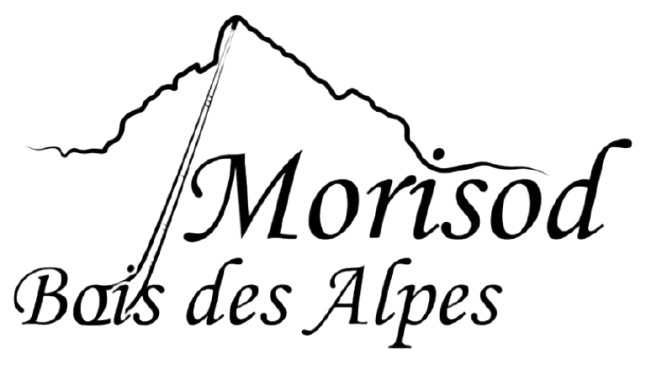Histoire et Fabrication
- Home
- Histoire et Fabrication
Le Cor des Alpes ...
J’espère que ces quelques lignes contribueront à étancher votre soif d’en savoir plus sur ce fameux instrument qui exprime si bien l’âme campagnarde.
Les vibrations profondes du cor servent à interpréter une musique souvent simple, associée à la fête champêtre ou s’élevant, solitaire, au centre d’un vaste espace épuré des bouillonnements de l’humanité. Son chant est perpétuellement en accord avec l’instant, la condition, les nécessités de la vie alpine, ses joies et ses nostalgies.
Le Cor des Alpes est un instrument à vent dans lequel une colonne d’air entre en vibration. Le plus souvent les cornistes jouent en fa dièse ou en fa, mais il existe aussi des instruments en do, si, ré dièse etc. Plus le cor est court plus il est difficile d’en jouer.
Dépourvu de perces et de piston, il ne peut émettre que des sons simples produits par les vibrations des lèvres à l’embouchure,
transmises par la colonne d’air du cor (330 cm en fa dièse).
La maîtrise de l’instrumentiste réside donc dans sa virtuosité labiale qui anime les divers registres de la colonne d’air pour produire des sons mélodiques. La vibration complète de la colonne d’air produit le ton fondamental.
Les sons émis de cette façon sont dits naturels. Seul le cor des Alpes a le majestueux pouvoir de sonoriser toute une vallée alpestre, sa portée peut atteindre 8 km. Comme le joueur de cor ne dispose que de tons naturels, il ne peut interpréter toutes les mélodies.
Il s’agit d’un instrument pastoral. Au temps préhistorique, les bergers nomades l’ont apporté d’Asie centrale vers l’Europe et nos montagnes. De l’Islande aux Pyrénées, des Vosges aux Alpes et jusqu’ aux Carpates, de Scandinavie en Afrique centrale, Amérique du Sud et Australie, la trompe des bergers sonne pratiquement partout dans le monde.
D’après la mosaïque romaine de Boscéaz, près d’Orbe, les Helvètes en jouaient il y a quelques deux mille ans en arrière. Pour l’anecdote, en 1661 un berger itinérant d’Eggiwil fut poursuivi pour tapage nocturne au cor des Alpes. Dans l’Entlebuch en 1653, ses appels sonnent le ralliement du soulèvement paysan. Au 17e siècle, des joueurs de cor des Alpes ambulants mendient leur nourriture dans les villes. Au 18e siècle, la répression croissante d’une culture populaire spécifique voue cet instrument de plus en plus à l’oubli.
Cependant, dès la fin du 18e, la vogue des voyages et l’attrait croissant des Alpes suscite de nombreuses citations du cor dans les carnets de route des voyageurs. Jean-Jacques Rousseau porte l’instrument à la connaissance de toute l’Europe lorsqu’il cite ses effets dramatiques sur le moral des soldats suisses en service à l’étranger. « Le célèbre Rangs des vaches… si chéri des Suisses qu’ il fut défendu sous peine de mort de jouer dans leur troupes, parce qu’ il faisait fondre en larmes, déserter, ou mourir qui l’ entendaient.
Concernant sa fabrication, bien que cette pratique soit encore quelquefois employée de nos jours, un fût de sapin rouge déjà ‘’ préformé ‘’ était jadis choisi pour la fabrication du célèbre cor. Cette forme courbe est due à ce que notre jeune sapin se plie à la base par la pression de la neige qui provoque une forte poussée dans les terrains à plus ou moins forte pente et au bout de quelques années il conserve cette forme typique. Une fois abattu il est mis reposé longtemps afin de sécher son bois. Puis il sera enfin taillé à la gouge, doloire, rabot et autres outils. Ces cors ne se démontent pas, ou alors ils se séparent en deux parties, contrairement aux trois ou quatre pièces qui constituent aujourd’hui, le plus souvent, un cor des Alpes.
Voici maintenant narrée l’histoire actuelle de la fabrication d’un cor des Alpes.
C’est là, dans la magique atmosphère d’une forêt d’épicéas, que commence la magnifique aventure du Cor des Alpes.
Une fois l’arbre choisi, il est acheminé à la scierie, là où la bille souvent plus que centenaire sera sciée.
Un long séchage attend maintenant notre sapin.
Le bois sec : l’artisan le sélectionne en lui privilégiant une structure sans nœud, et aux cernes annuels réguliers et bien serrés.
Le bois d’épicéa constitue la presque totalité du Cor des Alpes. La couronne qui entoure le pavillon est d’une essence plus dure afin d’en améliorer la solidité. L’extrémité du cor qui reçoit l’embouchure est, elle, aussi en bois dur et résistant aux attaques de l’humidité.
Le façonnage de l’instrument commence par le corroyage des planches de bois de façon à obtenir une section qui pourra contenir un demi-rond creusé. Ensuite l’ évidage des deux parties intérieures : dans un premier temps à l’aide de diverses machines puis avec quelques outils tels que rabots ronds, gouges, guimbardes, limes et papiers de verre. Une fois le polissage terminé, les deux moitiés sont collées, arrondies puis cerclées le plus souvent d’éclisses de joncs, le tout renforçant la stabilité du cor. Les parties en bois durs tels que la couronne du pavillon, le réceptacle de l’ embouchure, le pied et la parfois une collerette, sont assemblée à l’instrument. L’heure des finition sonne, le Cor des Alpes sera poli et verni avant d’être accordé.
Une fois terminé si le client le souhaite, il peut être peint, sculpté, gravé,…etc
Maintenant c’est au tour du joueur de profiter de ce magnifique symbole national confectionné avec savoir-faire et méticulosité qu’est le Cor Des Alpes.
